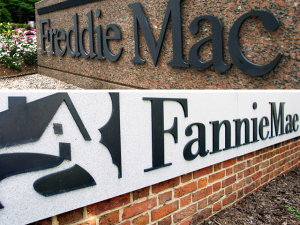New legislation introduced in the Senate yesterday would place Fannie Mae and Freddie Mac on a 10-year timeline, liquidating the two GSEs and turning its components over to the private sector.
According to a HousingWire report, the Mortgage Finance Act of 2011 would initially place the GSEs under receivership and then shut them down through an “orderly transition,” said Johnny Isakson, a Republican senator from Georgia who sponsored the legislation.
“My bill would shut down Fannie Mae and Freddie Mac through an orderly transition, and it will repay the taxpayers,” Isakson, a former real estate broker, said in a release. “I invite my colleagues in Congress, both Democrat and Republican, to move this bill forward to strengthen our nation’s housing finance system and our nation’s economy.”
Once under receivership, Fannie and Freddie would combine to become the Mortgage Finance Agency, where business would largely continue as usual. The agency would still charge guarantee fees on mortgage-backed securities, and those fees would then fund mortgage guarantees and rainy day funds for the agency’s balance sheets.
Within three years of the receivership, though, the agency’s board would draw up plans on a transition to the private sector. The plan would then go in to effect within five years and lead to privatization within 10, and the proceeds of the company’s selloffs would go to the same Treasury Department that has provided more than $141 billion in bailout funds to the GSEs.
The board of the new agency would draw up a plan within three years on how to go private. The plan would take effect within five years and privatization within 10 years, and sale proceeds would go to the general fund of the Treasury Department.
Interestingly, Isakson’s bill also includes a provision on down payments. Under the provision, required down payments on single-family mortgages would be lowered to 5 percent, down from the 20 percent of a proposal issued in March.

